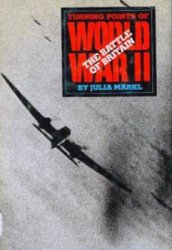The decline of Egyptian control over Lower Nubia accelerated as the Thirteenth Dynasty lost control, and there is archaeological evidence for the weakening of Egyptian control over Nubia. In Lower Nubia the presence of weapons in graves, tomb and body destruction, a spate of local native C - Group fortification building, and the subsequent reuse ofEgyptian fortifications are striking (O’Connor 1993: 47-57).
Two royal inscriptions indicate the difficulties for Thebes: the first, from the ephemeral Neferhotep Ikhernofret, provides one of the oldest references to ‘‘Victorious Thebes’’ (Vernus 1982) in a context which is military and defensive in nature. Pharaoh guides ‘‘Victorious Thebes’’ against his opponents, while Amun, his father, fights for him. The monarch is stated to have protected Thebes from ‘‘strangers,’’ and foreign rebels are also mentioned. It is probable that Thebes was blockaded by Nubians or possibly even Hyksos Asiatics. Significantly, around the same time, the famous military ‘‘blue crown’’ first appears (Davies 1982; time Neferhotep III).
A second contemporary Pharaoh, Mentuhotepi, presents a more rewarding account with the image of Victorious Thebes again rising in a military context (Vernus 1989). Mentuhotepi defended an encircled territory containing bastions and garrisons that were built to defend his constricted land. The Nubians were the greatest threat even if the Asiatic Hyksos of the Fifteenth Dynasty had conquered the entire Delta and parts of middle Egypt (Ryholt 1997: 118-50, 302-09). Somewhat later than Mentuhotepi, an inscription in the el-Kab tomb of Sobeknakht refers to the kingdom of Kush attacking the Thebans (Davies 2003). The text, which refers to Nubians of the eastern desert and the Medjay, notes that Lower Nubia was aroused by Kush and other southerly regions.
The radical weakness of the late Thirteenth Dynasty owed much to the secession of the Canaanite population in the Delta from Pharaonic control. The quasi-independent zone in the North-east Delta soon became the separate Fourteenth Dynasty, and then the Hyksos, followed by a rapid move onto Memphis, took over as the Fifteenth Dynasty with their capital at Avaris (Ben-Tor, Allen, and Allen 1999 question Ryholt 1997 on Dynasties XIII-XIV). Ultimately the latter were successful at establishing their own dynasty because they brought into Egypt the horse and chariot together with excellent weaponry of a Near Eastern type: local axes, for example, fit well into the Syro-Palestinian contemporary cultures of the Middle Bronze Age with their non-Egyptian forms (Philip 2006).
The earlier Twelfth Dynasty stratigraphic levels at Avaris oddly show wider foreign connections than the later ones of the Thirteenth and Fourteenth Dynasties. This suggests that the rise of the Hyksos was separate from the independence of the North-east Delta and was also dependent upon strong links with the nearby territories of Asia. The introduction of horses and chariots into the Delta may thus have been a result of these later interconnections, and possibly Manetho’s account of a vast sweep upon Memphis by the Hyksos carries with it a core of truth. Furthermore, the Hyksos might not have belonged to the same groups of elite administrators and warriors who had broken away earlier during the Thirteenth Dynasty. The metallic content of tin, for example, so important in making bronze, is of prime importance in supporting this recent hypothesis. Avaris shows little arsenic-based copper, while Egypt, on the other hand, was transforming itself from mid Dynasty XII onwards to an arsenical bronze metallurgic civilization and then to a tin-bronze one. The surprising use of tin-bronze during the earlier phases of Tell ed-Daba in contrast to the overwhelming employment of unalloyed copper in the later strata cannot be overlooked.
The arrival of the sickle-shaped sword, associated earlier with western Asiatic elites such as warriors, kings, and the gods, took place during the Second Intermediate Period (Vogel 2006). This weapon, iconically and textually prominent in the New Kingdom, indirectly points to the newer military elites drawn into the cauldron of Egyptian politics. Even if the first horses ‘‘imported’’ into Egypt were considerably different from the mid-Eighteenth Dynasty examples (Rommelaere 1991), the Egyptians already had all the necessary materials and technology for chariot production by the time of the Middle Kingdom (Shaw 2001). If we add the subsequent arrival of the horse during the Hyksos Fifteenth Dynasty, then all of the military components were in place for a gradual switch in warfare.
The political set-up of the southern Theban state of the Seventeenth Dynasty resembled an armed camp with a commander-in-chief as ruler. The Koptos Decree of Nubkheperre Antef is clear on this matter, and early Eighteenth Dynasty details concerned with the first administrator of Nubia, Tjarou, support this analysis (Breasted 1906: I 339-41; Ryholt 1997: 266-9, 304-07). The governance ofKoptos fell upon a civilian administrator and a warrior. The latter is called a ‘King’s Son’, a prominent military man equivalent to the later ‘‘general’’ (Schmitz 1976). He was also the local commandant at Koptos. This royal edict was issued to the priesthood of Min, the local presiding deity, as well as to the army. Hence, it is reasonable to conclude that, just north of Thebes, a centralized war machine controlled the nome in tandem with a civilian governor. The term ‘‘King’s Son’’ had been in use since the Late Middle Kingdom, if not earlier; the designee was a military man but not necessarily the child of the ruler (Schmitz 1976; Quirke 2007: 133).
The Koptos decree sheds light upon political and military developments in Nubia under Kamose and Ahmose. The latter appointed a high-ranking military man, a ‘‘King’s Son,’’ to be the commander over the newly won fortress-town of Buhen (Smith 1976: 205-9). Thus the policy of reconquest in the south was based upon a military system already in place by the mid-Seventeenth Dynasty, when local commanders were in charge of key districts, even though a non-military official took care of day-to-day governmental affairs. In the Seventeenth Dynasty a new administrative system was installed in the south. Pharaoh was both chief of state at Thebes and leader of the army. Thus nationalism reemerged stronger than previously because there were now two enemies: Asiatic Hyksos and southern Nubians.
We should end this historical discussion of the Hyksos ‘‘interlude,’’ or conquest, by indicating the efficacy of two of the important technological developments that came into Egypt during the Second Intermediate Period. The first, the composite bow, is still hard to date precisely within an Egyptian archaeological context. It was considerably more powerful than its precursor, the simple bow, and its range has been estimated to have been around 120 m (Partridge 2002: 42-4). Needless to say, such a weapon meant that, almost automatically, the use of leather armor and helmets for protection had to be employed, neither of which were used in Middle Kingdom times. Composite bows became the staple of the elite military sector, the charioteer soldiers, and were protected in bow cases instead of being slung over the shoulders as the simple bows had been.
Chariots in Egypt were light and propelled by two horses. By the middle of Dynasty XVIII they had six spokes as a rule, although the Pharaoh is sometimes depicted waging war in an eight-spoked vehicle (Partridge 2002: 64-74; Cavillier 2002). From a series of preserved chariot wheels the diameters have been measured. The difference among those extant is slight: between 0.9 and 1.0 of a meter. The cab, or enclosed platform in which only two men stood, was small and narrow. From it one could strike forward provided that some side protection was placed on the cab. This was made usually from ox hide and thus protected the lower portions of the body. The weight of these chariots was slight, and wall reliefs sometimes show them being carried by soldiers on their backs after being unassembled. Probably their total weight would not exceed thirty-five kilograms (Partridge 2002: 65).
There were only two men in the cab, the driver and the warrior. The latter would first employ spears or javelins against the enemy, preferring to hit an opposing horse rather than to aim his arrows carefully against the human foe. Those weapons, as well as bows and arrows, were kept in long cases attached to either side of the cab. In close combat, however, the charioteer would direct his attention against an opposing charioteer hoping to penetrate his armor by means of the composite bow. This last action was considered to be the most important or, at least, was the one that is always depicted when the Pharaoh was depicted attacking a host of foreigners.
Finally, a few caveats should be mentioned concerning the effectiveness of these war vehicles (Spruytte 1983). Although they were highly manoeuverable owing to their light weight, chariots could not advance well on hills. In fact, on an incline more than ten degrees they would be relatively slow. Add to this the problem of a terrain that contained gorse, unsown wheat, or the like, and Egyptian chariots were unable to advance at a fast pace. We must keep in mind that this new war machine was not equivalent to a modern tank even though this misconception still appears in scholarly literature. Instead, they provided a mobile platform from which a charioteer-soldier could aim his javelins or arrows. The horses were solely employed as the propulsive power; no independent cavalry existed at this time.




 World History
World History









